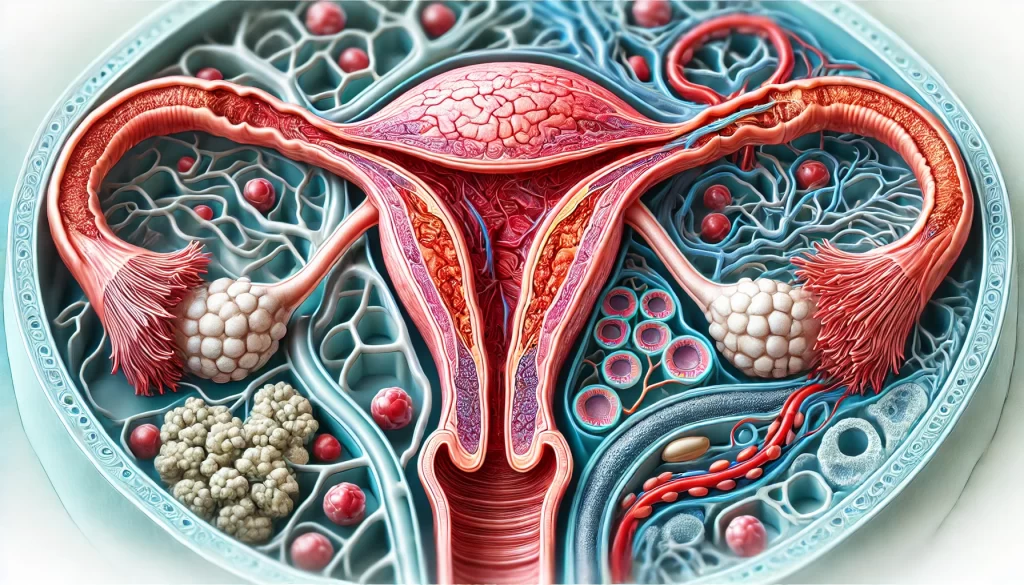Adenomyosis
Adenomyosis is a relatively common but often misunderstood condition that involves the encroachment of the endometrial tissue—normally lining the uterus—into the muscular walls of the uterus. Here’s an overview of the key points regarding adenomyosis:
Symptoms
Many women may not experience noticeable symptoms, but those who do may suffer from:
- Heavy and prolonged menstrual bleeding
- Severe menstrual cramps
- Abdominal pressure and bloating
- Pelvic pain
Causes
The exact cause of adenomyosis remains unclear, but it’s not related to an infection or contagious. The condition is benign, meaning it is not cancerous.
Diagnosis
Diagnosis typically involves:
- Pelvic examination: To inspect the external genital area, vagina, and cervix.
- Ultrasound or MRI: These imaging tests provide detailed images of the uterus, helping to confirm the presence of adenomyosis and rule out other conditions.
Treatment
Treatment options vary depending on the severity of the symptoms and may include:
- Anti-inflammatory medications: To manage pain.
- Menstrual blood loss treatments: To reduce heavy bleeding during periods.
- Hormonal therapy: Such as birth control pills, which can help regulate menstrual periods and reduce symptoms.
- Hysterectomy: Surgical removal of the uterus; this is considered a last resort for severe cases and for women who are not planning to have children.
Living with Adenomyosis
Managing adenomyosis can be challenging, but with the right treatment plan, many women are able to control their symptoms effectively. It’s important for those affected to seek support and care to manage the impact of the condition on their daily lives. If you’re experiencing symptoms suggestive of adenomyosis, consult with a healthcare provider to explore your diagnostic and treatment options.



 4.1 Attribution Theory and Person Perception: Why We Judge People the Way We Do (Even When We’re Totally Wrong) Let’s be honest. We’ve all
4.1 Attribution Theory and Person Perception: Why We Judge People the Way We Do (Even When We’re Totally Wrong) Let’s be honest. We’ve all



